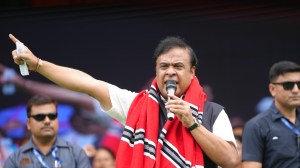Rain where it pours, not where it’s needed
The Met department says that technically the monsoon has arrived in the entire country but in some parts, it does not manifest itself in sub...

The Met department says that technically the monsoon has arrived in the entire country but in some parts, it does not manifest itself in substantial rain. According to experts, there will be no rain in the next three-four days in the areas that are already rain-deficient and there will be rain in the states coping with floods.
The country saw some rain between July 14 and 18 but now, at best, there will be ‘scattered and isolated rain’ over most of Central and North West India in the next few days as the monsoon goes back into a weak phase.
This phenomenon is what is called a ‘break monsoon,’ according to a presentation made by the National Centre for Medium Range Weather Forecasting (NCMRWF) to the Crop Weather Watch Group today. Its forecast shows that rainfall deficiency in some of distressed areas like East and West Rajasthan, Western Madhya Pradesh, Western Uttar Pradesh, Punjab, Haryana, Vidarbha and Marathwada is likely to be worse.
There will be widespread rain in North East, sub-Himalayan West Bengal and North Bihar leading to more floods.
‘‘The monsoon trough has again shifted to the foothills of Himalayas,’’ said D P Yadav, director, Indian Meteorological Department. The trough in normal situation has to extend from Pakistan to the south of Delhi.
Last week had seen slight improvement in the system with the formation of a low-pressure area in the Bay of Bengal leading to progress of monsoon in the remaining areas of north-west India yesterday. This short spell helped areas like Punjab, Haryana, Uttaranchal and even some places in Rajsthan to recover a little.
In the South, there was good news with highly-stressed Telangana, Rayalseema and Tamil Nadu getting a spell of rain last week, making sowing possible.
This is different from the 2002 drought — one, the overall percentage of deficiency of rain in the country is much less in July. (10 per cent deficiency as compared to 25 per cent). Two, the number of meteorological subdivisions experiencing more than 40 per cent shortfall was 10 as compared to three this time.
Then, the drought was evenly spread in 2002. This year, there is a peculiar situation in which the eastern part of the country has excess rain — Meghalaya, Assam, Arunachal Pradesh and Bihar — while most of North West and Central India have more than 30 per cent deficiency of rain.
‘‘This kind of contrary situation is resulting in a unique form of stress for the whole country. Policy-makers have to make contingency plans for both floods and droughts,’’ said an official at the agriculture ministry. In fact, the Indian Council for Agriculture Research have issued agro advisories for two contrasting situations.
This time, the other difference is that the medium-range forecasting has warned of this situation from the first week of July. In 2002, nobody in the establishment woke up to the situation till the fourth week of July.
This time, teams were dispatched early this month to study the ground situation of the crop already sown. They have come back and their official stance is that the situation is ‘‘grim but not alarming as yet.’’ They say that the states are prepared with their contingency plans.
The only state where drought is already real is Rajasthan. Their report has been sent to the Prime Minister’s Office. The team will be making another visit at the end of July to assess the real impact of delayed monsoon.
Photos





- 01
- 02
- 03
- 04
- 05


























